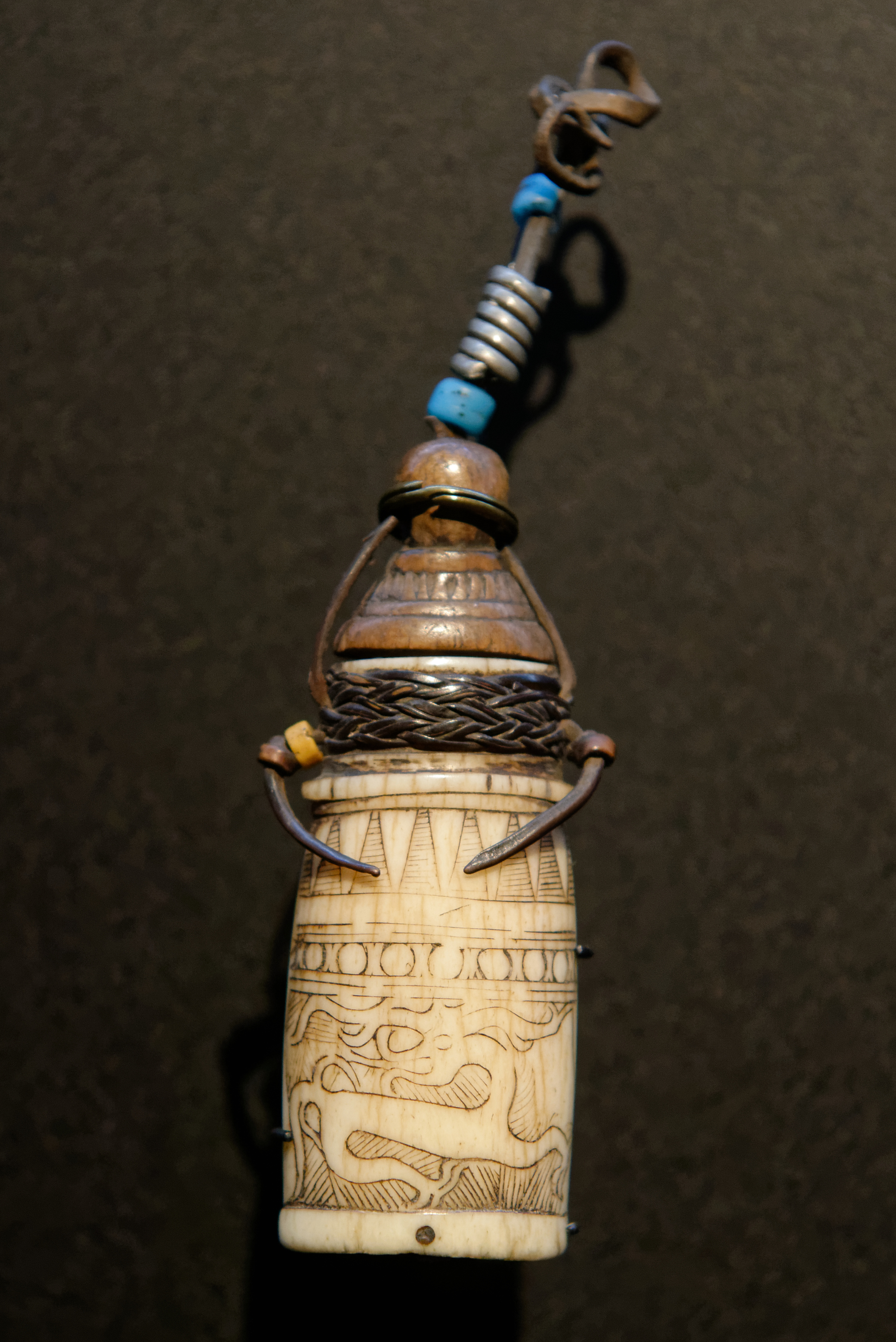Needlecase on:
[Wikipedia]
[Google]
[Amazon]
 A needlecase or needle case is a small, often decorative, holder for
A needlecase or needle case is a small, often decorative, holder for
Inuit Art: Needle cases
Canadian Museum of History
Mongolian/Tibetan silver needlecase
19th century, McClung Museum
Carved wooden needlecase
15th century Flanders, Hermitage Museum
1550-1680, Museum of London {{Sewing Sewing equipment
 A needlecase or needle case is a small, often decorative, holder for
A needlecase or needle case is a small, often decorative, holder for sewing needle
A sewing needle, used for hand-sewing, is a long slender tool with a pointed tip at one end and a hole (or ''eye'') to hold the sewing thread. The earliest needles were made of bone or wood; modern needles are manufactured from high carbon steel ...
s. Early needlecases were usually small tubular containers of bone, wood, or bronze with tight-fitting stoppers, often designed to hang from a belt. Needlecases are sometimes called by the French name ''Ă©tui
A decorative box is a form of packaging that is generally more than just functional, but also intended to be decorative and artistic. Many such boxes are used for promotional packaging, both commercially and privately. Historical objects are ...
'' and are typically one of the tools attached to a chatelaine
Chatelaine may refer to:
* Chatelaine (chain), a set of short chains on a belt worn by women and men for carrying keys, thimble and/or sewing kit, etc.
*Chatelaine (horse), a racehorse
* ''Chatelaine'' (magazine), an English-language Canadian wom ...
. A pin poppet is a similar container for pin
A pin is a device used for fastening objects or material together.
Pin or PIN may also refer to:
Computers and technology
* Personal identification number (PIN), to access a secured system
** PIN pad, a PIN entry device
* PIN, a former Dutch de ...
s, common in the 18th century.
History
Early sewing needles were precious items and easily lost. Needlecases were a necessity for storing these fragile objects, and are found in cultures around the world. Tubular bronze needlecases are common finds fromViking
Vikings ; non, vĂkingr is the modern name given to seafaring people originally from Scandinavia (present-day Denmark, Norway and Sweden),
who from the late 8th to the late 11th centuries raided, pirated, traded and se ...
-age sites in Europe. Cane needlecases were found in a grave from Cerro Azul, Peru {{Infobox settlement
, name = Cerro Azul
, native_name =
, native_name_lang = es
, settlement_type = Village
, image_skyline =
, image_alt =
, image_caption = ...
, dated to 1000â1470 AD. Bone, leather and metal needlecases have been found from Medieval
In the history of Europe, the Middle Ages or medieval period lasted approximately from the late 5th to the late 15th centuries, similar to the Post-classical, post-classical period of World history (field), global history. It began with t ...
London, and bone or ivory needlecases were made by Inuit
Inuit (; iu, áááአ'the people', singular: Inuk, , dual: Inuuk, ) are a group of culturally similar indigenous peoples inhabiting the Arctic and subarctic regions of Greenland, Labrador, Quebec, Nunavut, the Northwest Territories ...
. Bone and ivory needlecases and pin poppets were also popular in 18th century America.
Elaborate needlework confections like the frog-shaped needlecase in the Los Angeles County Museum of Art
The Los Angeles County Museum of Art (LACMA) is an art museum located on Wilshire Boulevard in the Miracle Mile, Los Angeles, California, Miracle Mile vicinity of Los Angeles. LACMA is on Museum Row, adjacent to the La Brea Tar Pits (George C. Pa ...
appeared by the 16th century. Heavily decorated silver and brass needlecases are typical of the Victorian period
In the history of the United Kingdom and the British Empire, the Victorian era was the period of Queen Victoria's reign, from 20 June 1837 until her death on 22 January 1901. The era followed the Georgian period and preceded the Edwardian ...
.
Between 1869 and 1887, W. Avery & Son, an English needle manufactory, produced a series of figural brass needlecases, which are now highly collectible. Avery's dominance of this market was such that all similar brass Victorian needlecases are called "Averys".
Gallery
References
External links
Needlecases in museum collectionsInuit Art: Needle cases
Canadian Museum of History
Mongolian/Tibetan silver needlecase
19th century, McClung Museum
Carved wooden needlecase
15th century Flanders, Hermitage Museum
1550-1680, Museum of London {{Sewing Sewing equipment